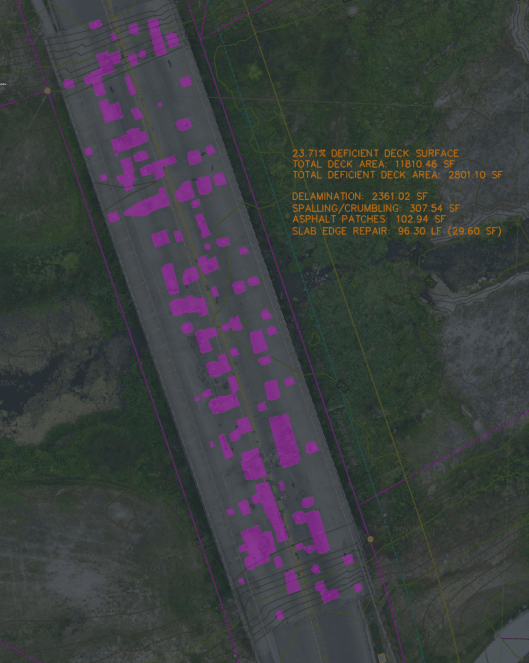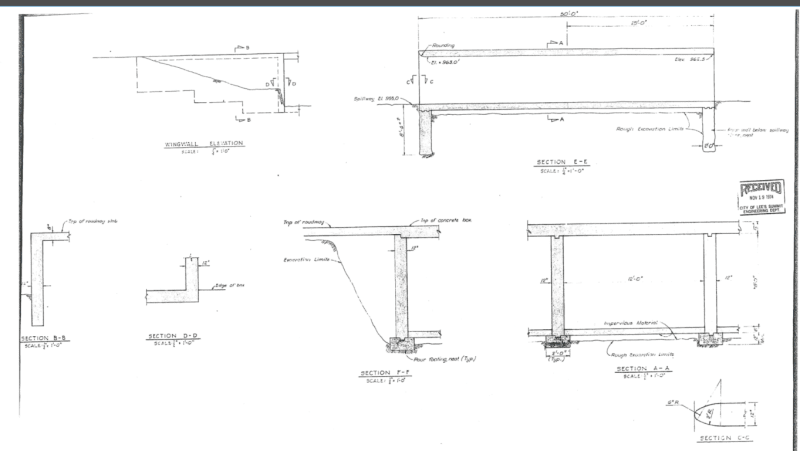Jayburr
Civil/Environmental
- Jul 9, 2024
- 5
Hello, I am a recent grad from May working my first "real" job (in Missouri), and I have been tasked with putting together plans/quantities for a bridge repair project and am struggling greatly with the deck. We went out and chain dragged the deck to identify delaminated area, and I've attached a screenshot below showing what that looks like. Needless to say, it's a lot, as the bridge is really in horrible condition. There is also significant spalling and slab edge repair that will be needed, as well as existing repairs that will need to be removed and replaced.
 .
.
Here's my main question, among many: how can I classify the repairs as half-sole repairs or shallow deck repairs before any demolition or removal is performed? Half-sole repair areas are classified as "deck imperfections exposing the upper layer of the top mat of reinforcing steel 1/4"..." and shallow deck repairs are classified as "deck imperfections deeper than 1/4" to a depth where reinforcing steel is not exposed." So how can I differentiate which repair is needed before I can see how deep/significant the damage is underneath the surface? For areas with just spalling (not shown in the attached image), I have pretty much the same question.
I will also attach a screenshot from the original plans for the bridge (built ~1975) to the post, as well as a profile view from my own CAD drawing, so you can get a better idea of what the structure looks like.


Any advice helps, as would examples of plans from similar projects, as I've pretty much exhausted my searching abilities and have had little success finding any. Apologies for naivety and any formatting errors here. Like I said, I'm brand new to this line of work, and I've also never posted on this site. Thanks so much.

Here's my main question, among many: how can I classify the repairs as half-sole repairs or shallow deck repairs before any demolition or removal is performed? Half-sole repair areas are classified as "deck imperfections exposing the upper layer of the top mat of reinforcing steel 1/4"..." and shallow deck repairs are classified as "deck imperfections deeper than 1/4" to a depth where reinforcing steel is not exposed." So how can I differentiate which repair is needed before I can see how deep/significant the damage is underneath the surface? For areas with just spalling (not shown in the attached image), I have pretty much the same question.
I will also attach a screenshot from the original plans for the bridge (built ~1975) to the post, as well as a profile view from my own CAD drawing, so you can get a better idea of what the structure looks like.


Any advice helps, as would examples of plans from similar projects, as I've pretty much exhausted my searching abilities and have had little success finding any. Apologies for naivety and any formatting errors here. Like I said, I'm brand new to this line of work, and I've also never posted on this site. Thanks so much.
